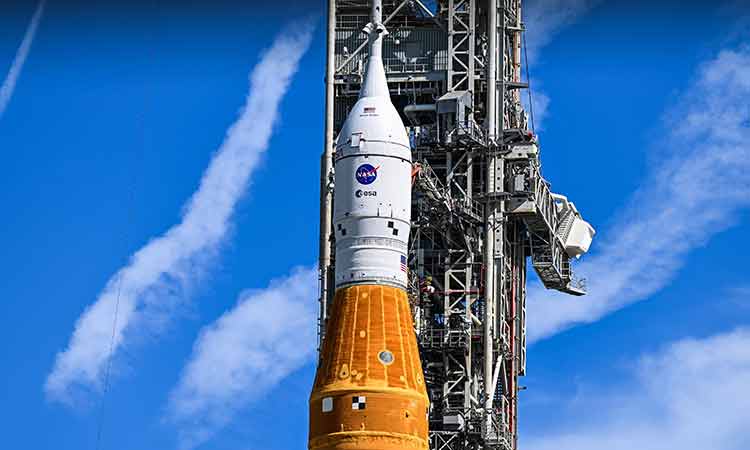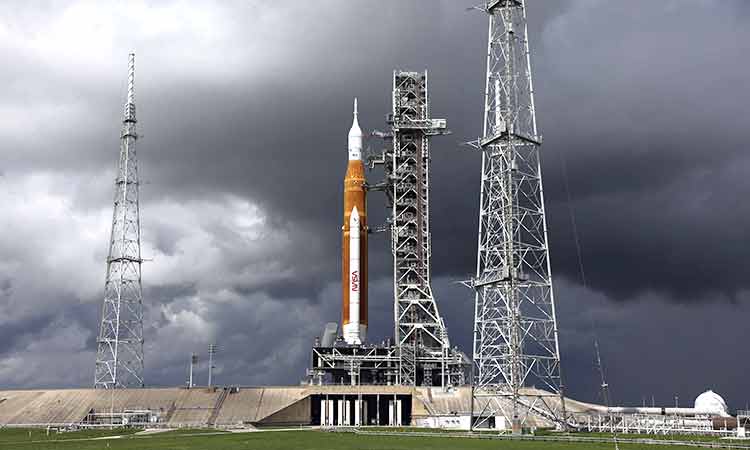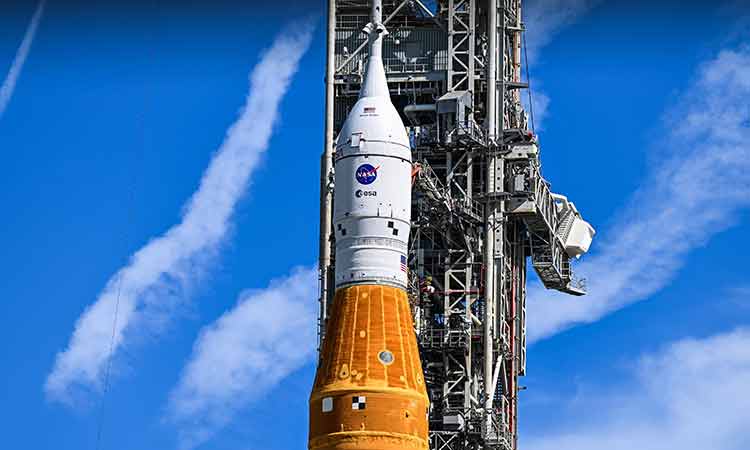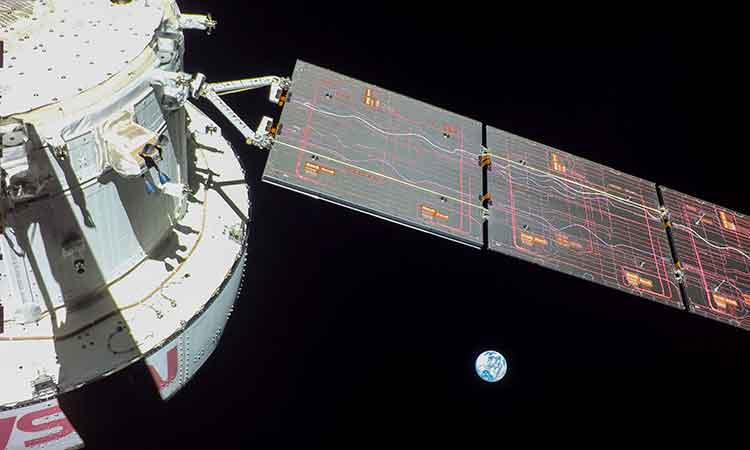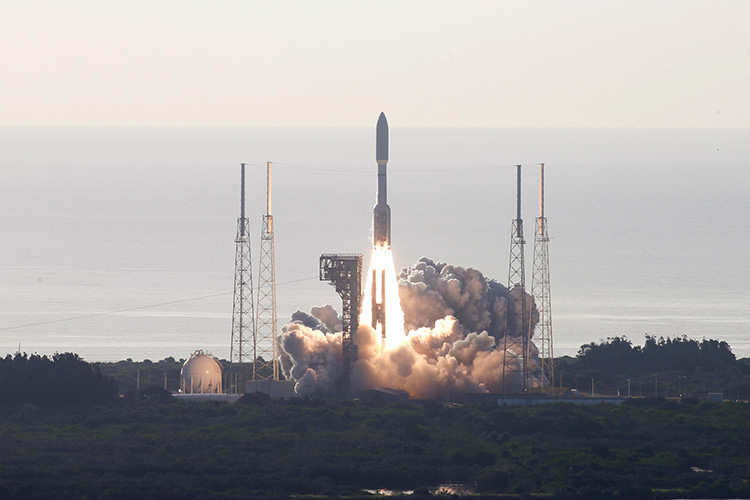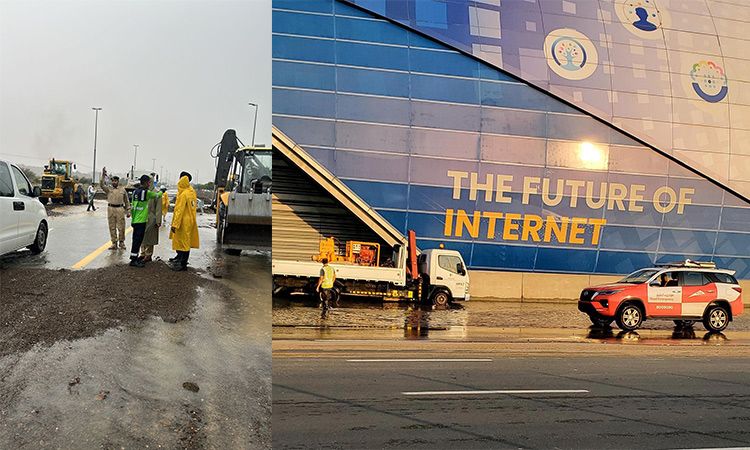Fuel leak ruins Nasa's 2nd shot at launching moon rocket
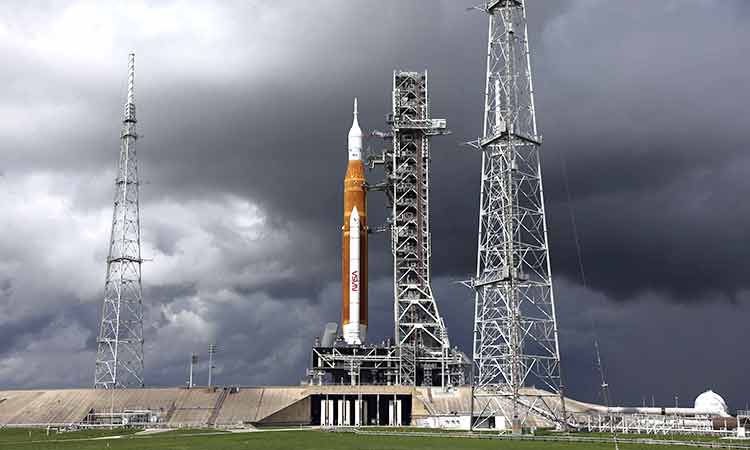
Nasa's Artemis I rocket sits on launch pad 39-B at Kennedy Space Center in Cape Canaveral, Florida, on Friday. AFP
The first attempt earlier in the week was also marred by escaping hydrogen, but those leaks were elsewhere on the 98-meter rocket, the most powerful ever built by Nasa.
There was no immediate word on when Nasa might try again. After Tuesday, a two-week launch blackout period kicks in.
Extensive fuel leak repairs could require that the rocket be hauled off the pad and back into its hangar, possibly pushing the flight into October.
Launch director Charlie Blackwell-Thompson and her team tried to plug Saturday’s leak the way they did the last time: stopping and restarting the flow of super-cold liquid hydrogen in hopes of removing the gap around a seal in the supply line. They tried that twice, in fact, and also flushed helium through the line. But the leak persisted.
Blackwell-Thompson finally halted the countdown after three to four hours of futile effort.
"We have a scrub for the day,” announced NASA's launch commentator, Derrol Nail.
Nasa wants to send the crew capsule atop the rocket around the moon, pushing it to the limit before astronauts get on the next flight. If the five-week demo with test dummies succeeds, astronauts could fly around the moon in 2024 and land on it in 2025. People last walked on the moon 50 years ago.
READ MORE
West, Russia trade pressure on energy as Ukraine goes on attack
Eight migrants die trying to cross Rio Grande River into United States
After days of stormy weather, the weather cooperated early Saturday as the launch team began loading nearly 1 million gallons of fuel into the Space Launch System rocket.
But minutes into the operation, hydrogen fuel began seeping from the engine section at the bottom of the rocket, violating safety rules.
During Monday's launch attempt, hydrogen fuel escaped from elsewhere in the rocket. Technicians tightened up the fittings over the past week, but Blackwell-Thompson cautioned that she wouldn't know whether everything was tight until Saturday's fueling.
Even more of a problem on Monday, a sensor indicated one of the rocket's four engines was too warm, but engineers later verified it actually was cold enough. The launch team planned to ignore the faulty sensor this time around and rely on other instruments to ensure each main engine was properly chilled.
Mission managers accepted the additional risk posed by the engine issue as well as a separate problem: cracks in the rocket's insulating foam. But they acknowledged other problems - like fuel leaks - could prompt yet another delay.
That didn't stop thousands from jamming the coast to see the Space Launch System rocket soar. Local authorities expected massive crowds because of the long Labuor Day holiday weekend.
The Artemis I unmanned lunar rocket sits on the launch pad at the Kennedy Space Center. AFP
The $4.1 billion test flight is the first step in Nasa's Artemis program of renewed lunar exploration, named after the twin sister of Apollo in Greek mythology.
Twelve astronauts walked on the moon during Nasa’s Apollo program, the last time in 1972.
Artemis - years behind schedule and billions over budget - aims to establish a sustained human presence on the moon, with crews eventually spending weeks at a time there. It's considered a training ground for Mars.
Associated Press
